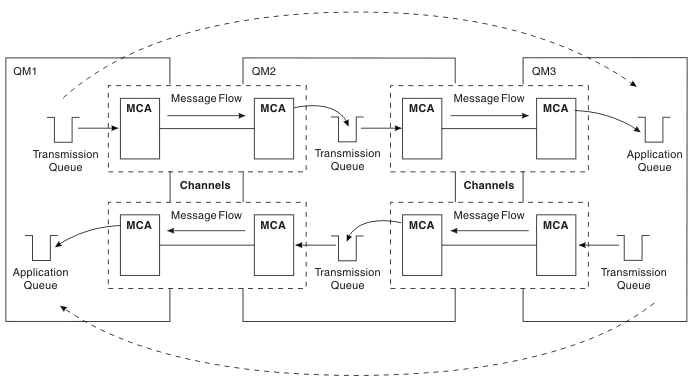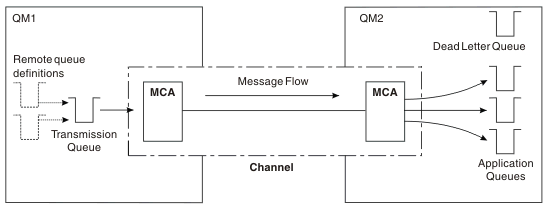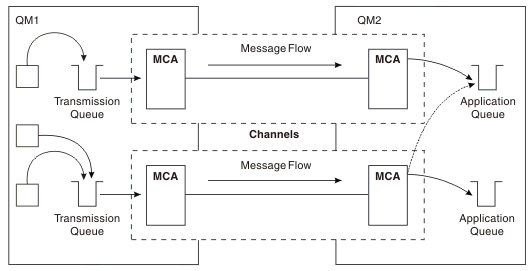How to get to the remote queue manager
You might not always have one channel between each source and target queue manager. There are a number of other ways of linking between the two, including multi-hopping, sharing channels, using different channels and clustering.
Multi-hopping
If there is no direct communication link between the source queue manager and the target queue manager, it is possible to pass through one or more intermediate queue managers on the way to the target queue manager. This is known as a multi-hop.

Sharing channels

Figure 2 illustrates that messages from multiple applications to multiple remote queues can use the same channel.
Using different channels
If you have messages of different types to send between two queue managers, you can define more than one channel between the two. There are times when you need alternative channels, perhaps for security purposes, or to trade off delivery speed against sheer bulk of message traffic.

When you use remote queue definitions to specify a transmission queue, your applications must not specify the location (that is, the destination queue manager) themselves. If they do, the queue manager does not use the remote queue definitions. Remote queue definitions give you location independence. Applications can put messages to a logical queue without knowing where the queue is located and you can alter the physical queue without having to change your applications.
Using clustering
Every queue manager within a cluster defines a cluster-receiver channel. When another queue manager wants to send a message to that queue manager, it defines the corresponding cluster-sender channel automatically. For example, if there is more than one instance of a queue in a cluster, the cluster-sender channel could be defined to any of the queue managers that host the queue. IBM® MQ uses a workload management algorithm that uses a round-robin routine to select an available queue manager to route a message to. For more information see Clusters.